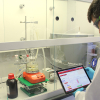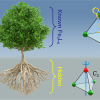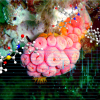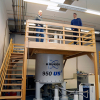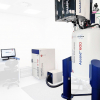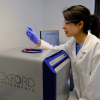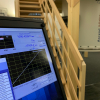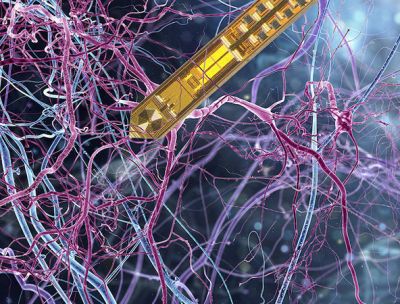
A team of neuroscientists and electrical engineers from Germany and Switzerland have developed a highly sensitive implant that enables brain physiology to be probed with unparalleled spatial and temporal resolution. The device is ultra-fine needle with an integrated chip that combines an ultra-sensitive 300-µm nuclear magnetic resonance (NMR) coil with a complete NMR transceiver. It is capable of detecting and transmitting NMR data from nL volumes of brain oxygen metabolism.
The group of researchers led by Klaus Scheffler from the Max Planck Institute for Biological Cybernetics and the University of Tübingen as well as by Jens Anders from the University of Stuttgart identified a technical bypass that bridges the electrophysical limits of contemporary brain scan methods. Their development of a capillary monolithic NMR needle combines the versatility of brain imaging with the accuracy of a very localised and fast technique to analyse the specific neuronal activity of the brain. “The integrated design of a nuclear magnetic resonance detector on a single chip supremely reduces the typical electromagnetic interference of magnetic resonance signals. This enables neuroscientists to gather precise data from minuscule areas of the brain and to combine them with information from spatial and temporal data of the brain´s physiology”, explains principal investigator Klaus Scheffler. “With this method, we can now better understand specific activity and functionalities in the brain.”
According to Scheffler and his group, their invention may unveil the possibility of discovering novel effects or typical fingerprints of neuronal activation, up to specific neuronal events in brain tissue. “Our design setup will allow scalable solutions, meaning the possibility of expanding the collection of data from more than from a single area – but on the same device. The scalability of our approach will allow us to extend our platform by additional sensing modalities such as electrophysiological and optogenetic measurements,“ adds the second principal investigator Jens Anders.
The teams of Scheffler and Anders are very confident that their technical approach may help demerge the complex physiologic processes within the neural networks of the brain and that it may uncover additional benefits that can provide even deeper insights into the functionality of the brain. With their primary goal to develop new techniques that are able to specifically probe the structural and biochemical composition of living brain tissue, their latest innovation paves the way for future highly specific and quantitative mapping techniques of neuronal activity and bioenergetic processes in the brain cells.
Their work has been published in Nature Methods (doi: https://doi.org/10.1038/s41592-019-0640-3).



